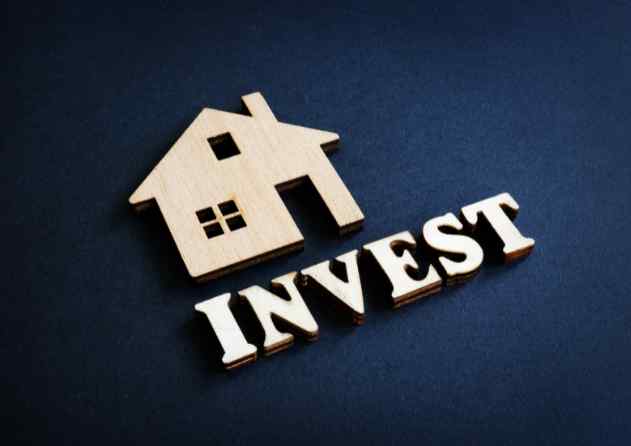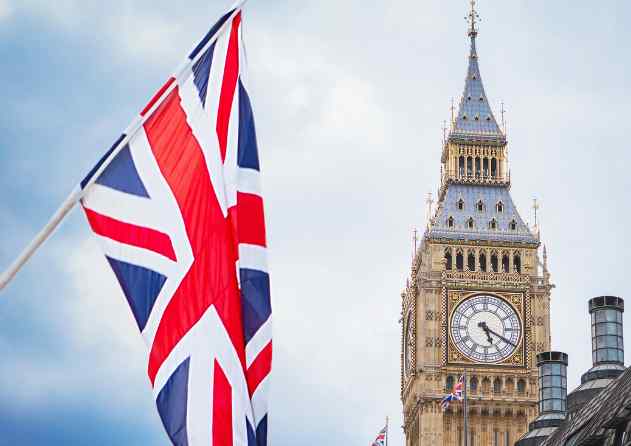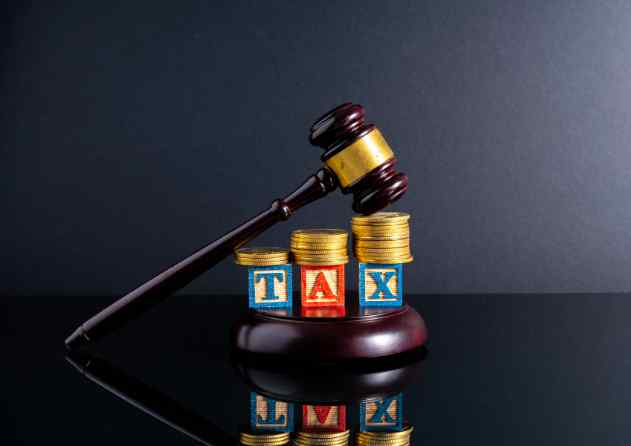London’s property market has seen an average house price increase of about 46% in the last decade. For savvy investors looking to capitalise on the lucrative opportunities in one of the world’s most desirable cities, London real estate can be an extremely attractive option.
What’s more, research indicates that London boroughs are projected to see property values increase by up to 13.9% in the next 5 years. This means London property deserves serious consideration from investors seeking strong capital growth and solid rental returns.
This article outlines the process of investing in property in London as well as some of the best opportunities for investment in terms of both capital appreciation and rental yield.
Why You Should Consider Investing in Property in London in 2024
According to reports, buy-to-let properties in London are predicted to perform the best in the UK housing market, yielding an annual return of 8.5% to 9.2% between 2024 and 2028. This signals an opportunity for investors to cash in on the stable interest rate before property prices skyrocket in the coming years.
Although several London property price predictions are indicating that future growth of London’s sales market may face headwinds, demand for rentals in the city remains consistent. According to Zoopla, asking rents in the UK rose by 9.7% in 2023, with London experiencing a 9% increase.

Investing in property developments like apartments or flats in up-and-coming London locations can provide a stable income stream for investors through rental returns. However, investors may have to consider a long-term strategy for capital gain returns.
While real estate investment in London may face challenges in 2024, the opportunities for growth over the long term remain. Targeting rapidly growing areas from East London to North London and focusing on rental demand can help investors navigate market conditions and achieve their goals.
With proper due diligence and advice from UK property investment experts, London real estate investment continues to offer attractive potential for long-term returns. However, a property location is crucial to its success — the next section will highlight the best locations for property investment in London.
5 Best Investment Areas in London
London remains one of the best places to invest in property in the UK. However, where a property is located will determine its long-term performance.
Here are the best areas to invest in property in London according to expert recommendations from API Global’s experts:
- Park Avenue Place
- London Square: Watford
- E9: Hackney
- Central London
- Battersea, Richmond, and Acton
1. Park Avenue Place
Park Avenue Place, Deptford, London, stands out as a top investment area due to its unique blend of exclusivity and accessibility. The development offers 176 private apartments and duplexes, all with personal outdoor space, providing a high standard of living. Its prime location, within a 1,200-metre radius of major retail, leisure, marinas, parks, street markets, and restaurants, ensures a vibrant, convenient lifestyle.
The proximity to superb transport links further bolsters its appeal for potential tenants and investors alike. Being situated opposite an open green enhances its attractiveness, making it a promising opportunity for investment in London’s property market. Investors can take advantage of this high-yield property development before competition stiffens.
2. London Square: Watford
While not precisely in London, Watford, particularly the London Square development, stands out as a prime investment area in North West London. Its strategic location and excellent road and rail connections make it a top choice for commuters.
The high quality of life offered in this commuter town, coupled with the bold, contemporary design of the apartments, adds to its attractiveness. These factors contribute to a robust rental demand, thereby offering investors the potential for steady rental income.
With apartment prices starting at just £300,000, the development offers an opportunity for capital growth, making Watford a compelling choice for property investment near London.
3. E9: Hackney
E9 postcode, covering Hackney borough, especially Homerton, offers solid buy-to-let investment potential. Home to many young professionals and families, demand for rental property is high. One- and two-bedroom flats yield up to 5.2% per annum. Moreover, new developments around Hackney Wick and Fish Island, with proximity to the Olympic Park, are poised for significant price appreciation.
4. Central London
The prestigious districts of Mayfair and Marylebone in Central London offer blue-chip investments for high-net-worth investors. These areas have consistently returned an impressive yield, with luxury flats achieving up to 50% price growth in the last decade (based on estimates). For investors taking a long-term view, these prime areas represent the pinnacle of London property investment.
5. Battersea, Richmond, and Acton
London districts and towns like Battersea, Richmond, and Acton also present opportunities. New residential developments along the River Thames and around parklands are in high demand from both owner-occupiers and tenants. Achieving high yields with strong potential for capital gains, these London hotspots are worth considering for property investment.
With London’s ever-increasing population and limited land supply, the city’s property market is positioned for continued long-term growth. For investors seeking income and capital returns, London’s diverse neighbourhoods offer options at various price points to suit any investment strategy. While the areas outlined above represent some of the best places to invest in London in 2024 and beyond, there are other high-growth areas, which we’ll consider in the next section.
3 Booming London Areas to Watch for Capital Growth
Several areas in London are poised for significant capital appreciation over the coming years, presenting prime opportunities for investment.
Our picks for the best places to invest in property in London for rapid growth are:
- Plumstead
- Central Business District
- North Kensington
1. Plumstead
The London suburb of Plumstead has been identified as an area to watch for capital growth. Government investment in transport links, including Crossrail and the DLR extension, are significantly improving connectivity and access. Combined with major residential developments underway, demand for housing in the area is surging. Property values in Plumstead have significantly risen in the past 5 years and are projected to continue climbing at a healthy pace.
2. Central Business District
The City of London, London’s central business district, is home to some of the best property investments in London that are poised for growth. While commercial property has long dominated the area, residential development is accelerating.

Luxury high-rise apartment complexes are attracting affluent tenants looking to live close to their workplaces. Rental demand remains steady, and property values have been rising. Investors looking to tap into London’s resilient luxury market may find the City of London appealing.
3. North Kensington
North Kensington, located in West London, has been the focus of extensive urban regeneration in recent years. Improved public spaces, shopping centres, and transportation have transformed the neighbourhood into a hotspot for the best property investment in London.
An influx of young professionals and families have been drawn to the area’s cultural vibrancy and relative affordability. North Kensington’s popularity is also fueling property value growth, with estimates placing average prices increase at about 30% in the last 5 years. This upward trend is likely to persist, signalling that North Kensington may be an ideal area for investment.
In summary, London’s redevelopment initiatives and surging demand for housing are catalysing capital growth in neighbourhoods across the city. Plumstead, the City of London, and North Kensington represent a sample of the areas demonstrating the greatest near-term potential for property value appreciation and returns on investment. Investors searching for opportunities in London’s dynamic market should do well to consider these booming areas.
However, there are certain factors to consider when buying properties in London, as we’ll see in the following section.
4 Factors to Consider When Investing in London Property
Investors looking to purchase investment in London property should do well to consider these factors:
- Property location
- Current economic factors
- The type of property
- Renovation potential
1. Property Location
As mentioned earlier, the location of a property is one of the most important determinants of its investment potential and returns. Areas with a high density of students, young professionals, and public transit options often experience the strongest demand and value growth.
2. Current Economic Factors
Macroeconomic factors like interest rates and employment levels directly impact property demand and values.
When interest rates are low, mortgages are more affordable, and property sales rise. Similarly, when unemployment is low, and job growth is strong, demand for housing increases.
Investors should monitor key economic indicators to determine the optimal time to buy property or sell.
3. The Type of Property
The type of property, whether residential, commercial, or mixed-use, determines the potential rental income and capital gains.
Residential property developments, especially those built for students and young professionals, typically generate the highest rental yields. Commercial spaces also produce strong income but often require longer leases and experience higher vacancy rates.
Mixed-use properties that incorporate both residential and commercial spaces provide more stable returns. However, the complexity involved in managing them often requires experienced investors.
4. Renovation Potential
Properties with the potential for renovation or redevelopment often experience significant capital gains. Investors can purchase undervalued properties, renovate or rebuild them, and then sell or rent at a profit.
However, renovation projects require substantial capital and experience to execute successfully. At API Global, we recommend investors opt for new-build property investments, as they can start generating income right away!
In summary, London property can be an extremely attractive investment for those who carefully consider location, economic factors, property type, and renovation potential. With professional guidance from a wealth advisor, investors can achieve lucrative returns from both rental income and capital appreciation in one of the world’s most coveted property markets. So, what are the steps involved in purchasing London property? Keep reading to find out!
4 Steps for International Investors Buying Property in London
International investors considering an investment in London property should follow these steps:
- Choose a suitable location.
- Finance the property.
- Fulfill all legal requirements.
- Effectively manage the property investment.

1. Choose a suitable location.
Investors must identify up-and-coming London neighbourhoods that offer opportunities for capital appreciation and strong rental demand. We recommend consulting UK property investment experts who can advise on the best locations based on an investor’s goals.
2. Finance the property.
International investors have several options to finance a London property purchase, including savings, private mortgages, commercial mortgages, and bank mortgages (more on this later on in this guide). Mortgages for international investors typically require a 20% down payment. We recommend investors explore different financing options with banks and lenders prior to making an offer on a property.
3. Fulfill all legal requirements.
There are certain legal obligations for overseas investors purchasing London property. Investors will need to provide proper identification, proof of funds, and, in some cases, proof of income. They will also need to pay stamp duty on buy-to-lets and any other relevant taxes.
International investors should consider hiring a solicitor to handle the legal aspects of the purchase and ensure all requirements are met properly. Consulting with a wealth manager is often a good starting point.
4. Effectively manage the property investment.
Once the purchase is complete, investors must determine how to manage the London property. Many overseas investors hire a professional property lettings and management company to handle tasks like finding and screening tenants, collecting rent, conducting maintenance, and ensuring compliance with regulations. For buy-to-let investments, a good property manager is key to maximising returns; it also frees up time that you can devote to continue building your property portfolio.
Of all these steps for getting into property investment in London, navigating location and financing may present the most confusion. Investors should consult with their wealth manager to consider partnering with a UK property investment expert who can help them choose a suitable location and a reliable financing option. The next section explains more about the various ways to finance a London property purchase.
Financing a London Property Investment
Investing in property in London, as with any other location, often requires proper financing to complete purchases and calculate investment property returns. For international investors, in particular, the process of securing property finance in the UK may seem confusing since they don’t have a local credit history. However, by partnering with API Global via their wealth manager, investors can access our network of trusted mortgage providers.
That said, top financing options for investors interested in London property investment include:
- Commercial mortgages
- Bridge finance
- Secure loans
1. Commercial Mortgages
Commercial mortgages are secured loans issued by banks and private lenders to purchase investment properties used for commercial purposes, such as residential buy-to-let developments (e.g., apartments).
For overseas investors, commercial mortgages typically require a larger down payment, often 20–40% of the property value. Interest rates are usually variable and higher than residential mortgages. Terms are typically shorter, around 1 to 15 years, but offer better interest rates than a regular business loan.
Overall, commercial mortgages allow investors to leverage their investments for potentially higher returns.
2. Bridge Finance
Bridge finance provides short-term loans to secure a property while planning for longer-term financing or selling an existing property. Loans are usually 1 to 18 months with higher interest rates. Bridging finance gives investors flexibility and speed to act on opportunities. Many lenders offer bridging finance for international investors, especially for high-net-worth individuals.
3. Secured Loans
Secured loans use the investment property as collateral. Investors can borrow against the equity in their property at potentially lower interest rates than unsecured loans.
Secured loans often have flexible terms of up to 35 years, so investors can choose a repayment schedule that suits their investment goals. Some lenders offer secured loans for international investors, especially if they have a UK-based guarantor.
Property finance options allow overseas investors to leverage their capital for residential property investments in London. By working with lenders experienced in UK property lending and overseas investors, investors can find financing solutions tailored to their needs. That said, what are the various ways to maximise ROI to easily offset financing? Keep reading to find out!
Maximising Rental Income From London Investment Property
One of the most important goals for investors seeking an investment in London property is to make money from their property. One way to achieve this is by taking steps to ensure their property purchase yields the best possible return on investment (ROI).
Effective strategies for increasing revenue from a London rental property include:
- Regular rent reviews
- Converting to an HMO
- Maintaining competitive rates
- Minimising vacancy as much as possible
1. Regular Rent Reviews
Property managers should conduct rent reviews every 6–12 months to adjust pricing based on current market rates. For example, in the 12 months leading to December 2023, London landlords raised rent by about 6.9% as a means of offsetting inflation and maximising income.
2. Converting to an HMO
Converting a rental unit into an HMO (house in multiple occupation) partitions the space into separate bedrooms with shared common areas. This model attracts young professionals seeking affordable accommodation in expensive areas of London. HMOs can generate higher rental yields due to increased occupancy.
3. Maintaining Competitive Rates
When setting rental prices, property managers must consider the local area, type of unit, occupancy levels, and amenities offered. Rates should be in line with comparable listings on websites like Rightmove and Zoopla to attract tenant interest.
Underpricing units will result in lost revenue while overpricing risks vacancies and tenant turnover. The optimal price point maximises income while keeping occupancy high.
4. Minimising Vacancy As Much as Possible
Property managers can also increase income by minimising vacancies between tenants. Conducting viewings as soon as possible after a tenant vacates the unit and being flexible on move-in dates helps transition new tenants quickly. Offering incentives like a rent-free period for the first 1–2 months or contributing to moving costs may also appeal to desirable tenants.
Keeping rental prices competitive, optimising occupancy levels, and conducting regular reviews are prudent strategies for maximising income from London investment property. Partnering with a property management company is an excellent way for investors to implement best practices to generate the strongest possible returns from their real estate assets. But there is one more important consideration when considering investing in property in London — tax.
Tax Considerations for London Property Investors
Investing in London property comes with several tax considerations for investors to keep in mind, including:
- Stamp duty Land Tax
- Income Tax and Capital Gains Tax
1. Stamp Duty Land Tax
Foreign investors purchasing property in London are subject to Stamp Duty Land Tax (SDLT), a tax levied on the purchase price of the property. SDLT rates for non-UK residents are the same as for UK residents.
The current SDLT rates for residential property are:
- Up to £250,000: 0%
- The next £675,000 (From £250,001 to £925,000): 5%
- The next £575,000 (From £925,001 to £1.5 million): 10%
- The remaining amount (The portion above £1.5 million): 12%
SDLT must be paid within 14 days of completing the property purchase. Failure to pay the tax on time will result in penalties and interest charges.

2. Income Tax and Capital Gains Tax
Income Tax applies to rental income earned from a property in London. For non-resident landlords, the tax is withheld by the tenant or letting agent and paid to HM Revenue and Customs (HMRC) unless the landlord is approved to keep the gross rent. The rate of tax depends on the individual’s tax band.
Capital Gains Tax (CGT) is payable after selling a property that has increased in value. For non-resident individuals, CGT is charged on the gain made after April 2015. The rate for residential property is 18% or 28%, depending on the individual’s taxable income.
Investors may also be eligible for tax relief in certain situations. It’s crucial to seek professional advice to understand tax obligations fully and take advantage of any available reliefs or allowances. With proper planning, investment in London property can still provide attractive returns despite the taxes and uncertain market conditions.
Frequently Asked Questions
Is London property a good investment?
London property can be considered a good investment. With a robust economy, rich cultural diversity, and above-average wages, it offers a promising environment for property investors.
As of January 2024, the demand for privately rented homes remained consistent, indicating a thriving rental market. This, along with the city’s continual growth, makes London’s property market a potent avenue for wealth creation and financial goal achievement.
However, like any investment, it’s essential to conduct thorough research and consider market fluctuations and potential risks.
Is it a good time to buy a flat in London in 2024?
Despite the uncertainties in London’s housing market, characterised by high interest rates and rising rents, 2024 presents an opportunity for potential first-time buyers. The looming general election might introduce changes that could impact the market positively. While the situation may seem chaotic, those who can navigate this turbulence could find 2024 to be an ideal time to invest in property in London.
As always, careful consideration and advice from a wealth manager are crucial before making any significant investment decisions.
What is the ROI on property investment in London?
A good return on investment (ROI) in the London property market can be gauged by a rental yield of 6%. This means that despite the high initial costs, the steady rental income can yield a decent profit over time. As always, it’s important to carefully evaluate potential investments, considering market trends and property specifics.
Is London property overvalued?
According to Caroline Simmons of UBS Global Wealth Management, the London housing market is considered overvalued but still below pre-pandemic levels. Londoners currently need 10x their annual income to purchase a 60 square metre flat, a significant financial commitment. This suggests that the cost of property in London is disproportionately high relative to average incomes, a primary indicator of overvaluation.
However, it’s important to remember that a multitude of factors influence property value, and “overvaluation” can fluctuate over time based on these influences.
Will London house prices fall in 2024?
According to Halifax, UK house prices are expected to fall by up to 4% in 2024 due to high-interest rates negatively impacting mortgage affordability and sales completions. While this forecast is for the UK as a whole, it’s reasonable to infer it may influence London’s housing market, given London’s significant role in the national property market.
However, it’s important to note that a host of factors can influence property prices, and predictions may not always be precise, so it’s advisable to monitor the market closely.
Conclusion
London’s property market continues to offer attractive investment opportunities for investors seeking both capital growth and rental income. The city remains a global powerhouse with a chronic housing shortage and a growing population. Savvy investors who do their research, focus on up-and-coming areas, and take a long-term view will be well-placed to benefit from investing in property in London.
Although risks exist in any investment market, London’s diversity and openness to foreign investment will likely sustain its status as a world-leading property investment destination well into the next decade and beyond. Investors should contact their wealth manager to discuss property investment opportunities in this bustling city.
Disclaimer: Any information API Global provides does not constitute financial advice and is for educational purposes only.


